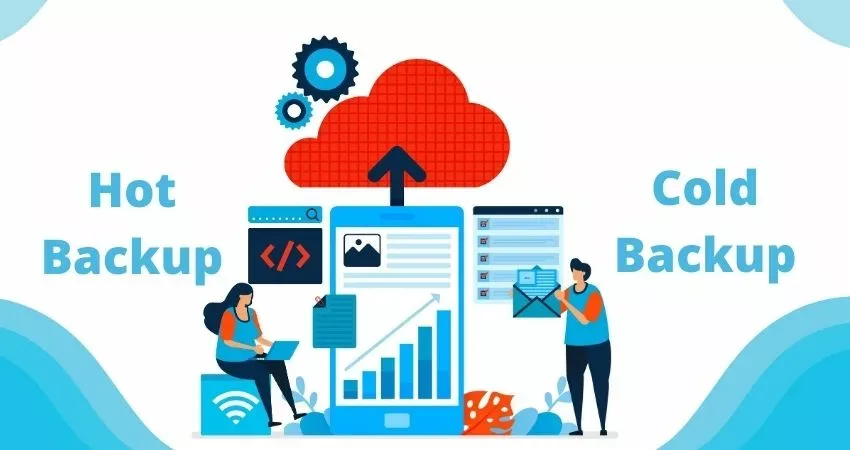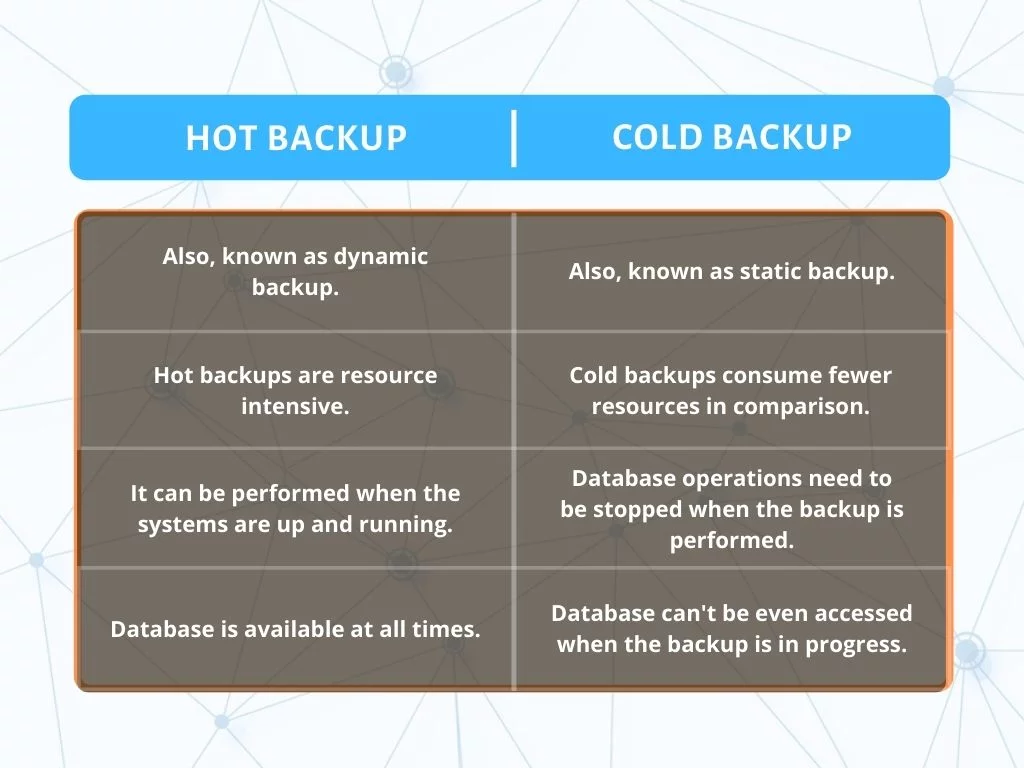In a world driven by data, one cannot afford to lose any data. Losing data can cause data gaps, which can lead to discrepancies in analytics and hence results. Moreover, when there are many unknown variables to tackle, it’s a good practice to have a failsafe in case of an untoward incident. We keep our valuables in safes and lockers; similarly, our data needs to be backed-up. There are two major types of backup practices in the data industry: Hot Backup & Cold Backup. Let’s take a look at them in depth.
What is Hot Backup?
Hot backup is also known as dynamic backup. It is performed in near real-time when the systems are up and running, and new data is continuously generated or captured.
In a hot backup, there is a time parameter involved as to when to perform a backup. This can range from seconds to minutes.
Here, the entire data is copied on the secondary location, and hence the relevant changes reflect in the new backup.
Hot backups are a bit resource intensive as there are multiple iterations stored at a time. This allows the user to restore the backup to a required point.
When the user provides a go-ahead, only then the old backup versions are removed.
The most important advantage here is the capability to continue business operations while the backup is in progress.
The database is available at all times, and hence the business can continue as usual.
What is Cold Backup?
Cold backup is also known as static backup. Here, the database operations are entirely stopped, and then the backup is performed.
While the backup is in progress, no business operations can be performed. This is mostly accomplished before the beginning of the day or at the end of the day.
Here a single backup version is made. Since no new data is added to this in real-time, the backup is performed swiftly and only once.
Cold backups consume fewer resources but have a limitation. The database cannot be accessed when the backup operation is in progress.
This requires the data access to be completely shut off from the front-end.
Also Read: What’s the Difference Between Snapshot and Backup?
Tabular Comparison
Hot Backup vs Cold Backup – What Should You Opt For?
Both hot and cold backups have their pros and cons. Organizations must understand which works for them the best. Let’s discuss the two together with examples.
If you are an organization with business operations working around the clock and cannot afford any disturbance or downtime, then hot backup is the one for you.
This way, you can safeguard your data and keep your business applications and operations running. If you are an organization that has fixed working hours, then cold backup is better for you.
The data which has been updated through the working day will be easily copied over without any hindrances.
Moreover, since there are no active backups taking place during working hours, the server does not have to handle any extra performance load.
This provides an extra performance boost to your database for ease of use.
Conclusion
Backups are an essential part of data-driven operations today. Organizations cannot afford to lose data. Based on their business needs, they can opt for a particular backup type that suits them the best.
Also Read: Top 5 Open-Source Data Recovery Software


